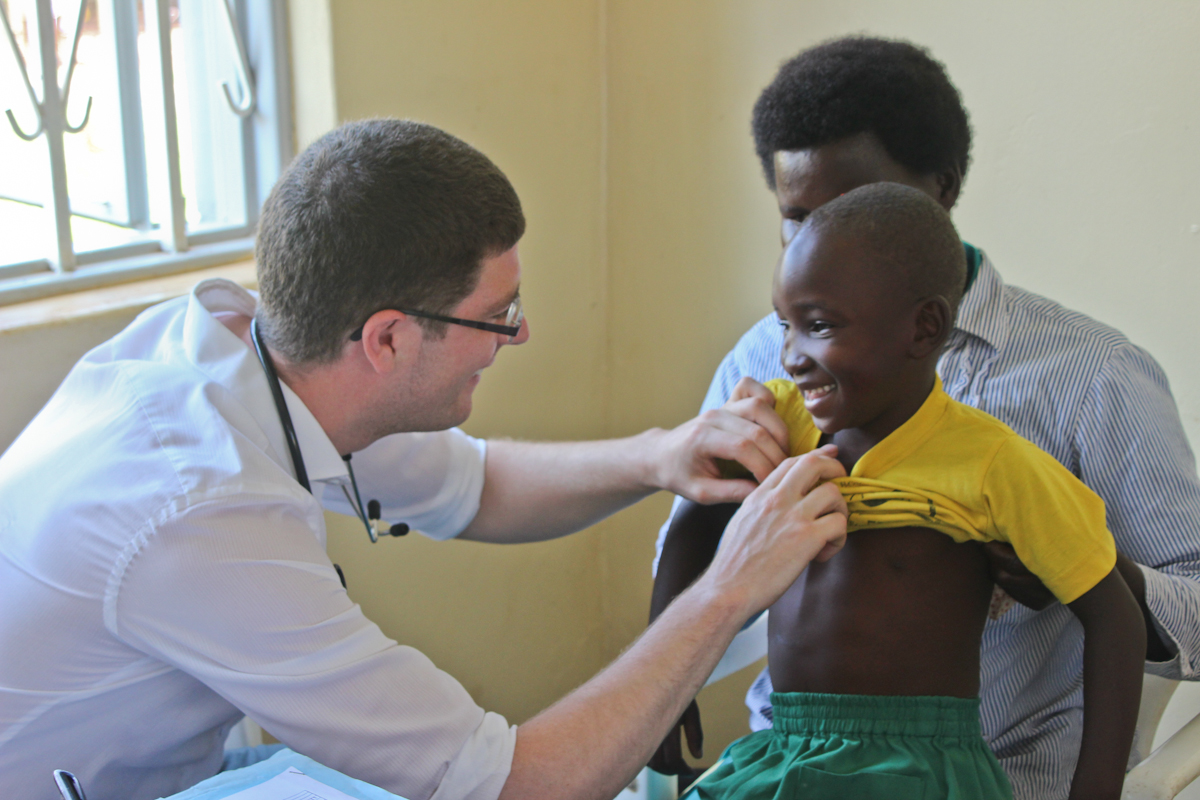Dr Sims-Williams’ first year of specialist training was in acute neurosurgery at the Royal Stoke University Hospital. He planned to develop further specialisms in functional and paediatric neurosurgery, while using the Clinical Research Primer Scheme to move onto further academic study.
He had already won a research and development poster prize, a Bristol Research and Enterprise Development (RED) bursary and a Wellcome Trust bursary for his elective placement at Oxford University. After qualifying as a doctor he managed to combine full-time clinical work with a number of audits and national presentations.
The EBI Clinical Primer Scheme funded Dr Sims-Williams for nine months to work on a PET (positron emission tomography) study of patients to assess the impact of deep brain stimulation (DBS) in pain relief. The study was a collaboration between the University of Bristol, the North Bristol NHS Trust and the Wolfson Molecular Imaging Centre in Manchester.
The project was proposed to him by Mr Nik Patel (Consultant Neurosurgeon at North Bristol NHS Trust’s Department of Neurosurgery and Pain Management) and Dr Tony Pickering (Wellcome Senior Clinical Research Fellow, Reader in Neuroscience and Consultant in Anaesthesia at Bristol’s School of Physiology, Pharmacology and Neuroscience).
DBS has been used to treat intractable pain for over 50 years. The surgical procedure works by targeting one or two areas of the brain that are part of the pain pathway. Introducing a small amount of electrical current to these areas can help block pain signals and alter our perception of these pain signals.
The theory is that electrical stimulation triggers the release of pain-suppressing chemicals (endogenous opioids) in the central nervous system, but this is largely on the basis of animal studies. The research aimed to use PET scanning of human subjects to address this question.
Dr Sims-Williams and the team recruited five patients under Nik Patel’s care at Frenchay Hospital in Bristol: three with anaesthesia dolorosa (a painful area of numbness, usually in the face, after injury to the trigeminal nerve) and two with phantom limb pain. All had had deep brain simulators implanted to help relieve deafferentation pain (pain caused by interruption of sensory signalling following nerve damage); and in all five cases, DBS had reduced pain by more than 50% for at least six months.
The researchers performed PET scanning on each patient to assess regional brain blood flow and opioid receptor binding after DBS had been turned on and off. Patients’ pain scores were recorded during the sessions. They then analysed data from areas of the brain known to be opioid-rich, in particular the ‘pain matrix’ where information on injury is processed.
The results showed that DBS reduces opioid binding at the stimulator site and throughout the pain matrix. This supports the theory that DBS triggers the release of endogenous opioids locally within the pain matrix, and is the first direct demonstration of the mechanism of DBS in humans.
Dr Sims-Williams’ project has resulted in two published papers in the journals Neuroimage [1] and Stereotactic and Functional Neurosurgery [2], for which he is first author. He also received a prize for best clinical paper of 2015 at the European Association of Neurosurgical Societies (EANS) conference. As a result of his work funded by the EBI award he was awarded a Masters of Science (neurophysiology) from the University of Bristol.
Dr Sims-Williams has continued improving our understanding of neurosurgery through academic pursuit. Most recently he has been co-author on a number of publications [3, 4] relating to neurosurgery and the developing world. After spending 6 months working at CURE Children’s Hospital of Uganda where he studied the long-term outcomes of children operated on for Spina Bifida.
‘I chose neurosurgery as a specialism because there are so many obstacles to good outcomes, with huge inter-operator variation and very few clinical trials to direct clinical guidelines. Researchers are continually changing the way we think about the brain, and I want to help revolutionise current practice through a successful career in clinical neurosurgical academia.’
References
[1] Hugh Sims-Williams, Julian C Matthews, Peter Talbot, Sarah Love-Jones, Nikunj K Patel and Anthony E Pickering. Deep brain stimulation of the periaqueductal gray releases endogenous opioids in humans. NeuroImage August 2016
http://dx.doi.org/10.1016/j.neuroimage.2016.08.038
[2] Sims-Williams H, Javed S, Pickering AE, Patel NK. Characterising the Analgesic Effect of Different Targets for Deep Brain Stimulation in Trigeminal Anaesthesia Dolorosa. Journal of stereotactic and functional neurosurgery 2016; 94:174-181
https://doi.org/10.1159/000446608
[3] H J Sims-Williams, Hugh P Sims-Williams, Edith Mbabazi Kabachelor, James Fotheringham, Benjamin C Warf. Ten-Year Survival of Ugandan Infants after Myelomeningocele Closure. Journal of Neurosurgery: Pediatrics October 2016
DOI:10.3171/2016.7.PEDS16296
[4] Henderson D*, Sims-Williams Hugh*, Sims-Williams HJ, Wilhelm T, Bhagani S, Thorne L. Neurosurgery and Human Immunodeficiency Virus (HIV) – A multidisciplinary review. Journal of Neurosurgery. April 2016
DOI:10.3171/2016.1.JNS151194
* - joint first authors

